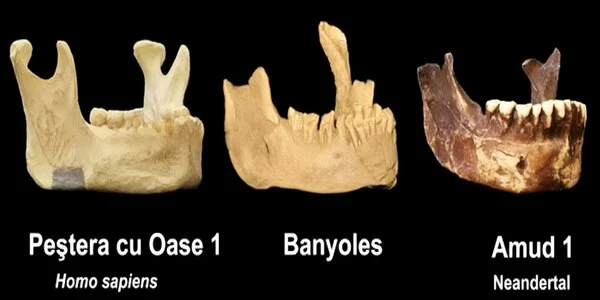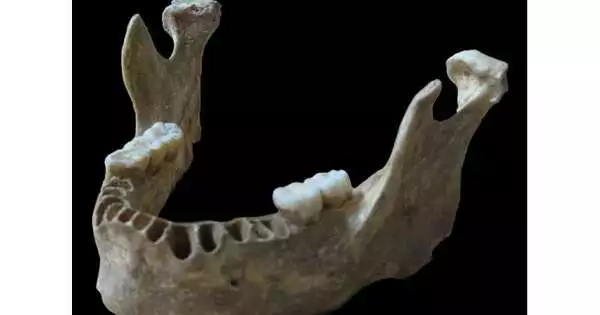A jawbone found in Greece in the 1970s and dated to around 210,000 years ago may represent the earliest known presence of humans in Europe. The jawbone, known as the Apidima 1 mandible, was initially thought to be from a Neanderthal, but recent studies have suggested that it may belong to an early member of our own species, Homo sapiens. However, the exact classification of the jawbone remains a topic of debate among scientists.
For more than a century, one of the earliest human fossils discovered in Spain was thought to be a Neanderthal. An international research team, including scientists from Binghamton University, State University of New York, has dismantled this century-long interpretation, demonstrating that this fossil is not a Neanderthal, but rather the earliest presence of Homo sapiens ever documented in Europe.
A fossil mandible was discovered during quarrying activities in the Spanish town of Banyoles in 1887, and it has been studied by various researchers over the past century. The Banyoles fossil most likely dates from 45,000 to 65,000 years ago, during the time when Europe was occupied by Neanderthals, and most researchers have linked it to this species.
Our findings were quite surprising — Banyoles shared no distinct Neanderthal traits and did not overlap with Neanderthals in terms of overall shape.
Brian Keeling
“The mandible has been studied for over a century and was long thought to be a Neanderthal based on its age and location, as well as the fact that it lacks one of Homo sapiens’ diagnostic features: a chin,” said Binghamton University graduate student Brian Keeling.
The new research made use of virtual techniques, such as CT scanning of the original fossil. This was used to virtually reconstruct missing parts of the fossil and then generate a 3D model for computer analysis. The authors investigated the expressions of distinct features on the mandible of Banyoles that differ between our own species, Homo sapiens, and our closest evolutionary cousins, the Neanderthals.
The authors applied a methodology known as “three-dimensional geometric morphometrics” that analyzes the geometric properties of the bone’s shape. This makes it possible to directly compare the overall shape of Banyoles to Neanderthals and H. sapiens.

“Our findings were quite surprising — Banyoles shared no distinct Neanderthal traits and did not overlap with Neanderthals in terms of overall shape,” Keeling said. While Banyoles appeared to be more similar to Homo sapiens in terms of both the expression of individual features and overall shape, many of these features are also shared with earlier human species, complicating an immediate assignment to Homo sapiens. Furthermore, Banyoles lacks a chin, which is one of the most distinguishing features of Homo sapiens mandibles.
“We were confronted with results that were telling us Banyoles is not a Neanderthal, but the fact that it does not have a chin made us think twice about assigning it to Homo sapiens,” said Rolf Quam, professor of anthropology at Binghamton University, State University of New York. “The presence of a chin has long been considered a hallmark of our own species.”
Given this, reaching a scientific consensus on which species Banyoles belongs to is difficult. The authors also compared Banyoles to an early Homo sapiens mandible found in Romania at Peştera cu Oase. This mandible, unlike Banyoles, has a full chin as well as some Neanderthal features, and an ancient DNA analysis revealed that this individual had a Neanderthal ancestor four to six generations ago. Because the Banyoles mandible shared no distinguishing features with Neanderthals, the researchers ruled out the possibility of a Neanderthal-H. sapiens hybrid to explain its anatomy.
The authors note that some of the earliest Homo sapiens fossils from Africa, which predate Banyoles by more than 100,000 years, do have less prominent chins than living populations. As a result, these researchers hypothesized that the Banyoles mandible could represent one of two things: a member of a previously unknown population of Homo sapiens that coexisted with the Neanderthals, or a hybrid of a member of this Homo sapiens group and an unidentified non-Neanderthal human species. However, at the time of Banyoles, the only fossils discovered in Europe were those of Neanderthals, making the latter hypothesis less likely.
“If Banyoles is a member of our species, this prehistoric human would be the earliest H. sapiens ever documented in Europe,” Keeling said.
Banyoles, whoever this mandible belongs to, is clearly not a Neanderthal at a time when Neanderthals were thought to be Europe’s sole inhabitants. “The current situation makes Banyoles a prime candidate for ancient DNA or proteomic analyses, which may shed additional light on its taxonomic affinities,” the authors conclude.












